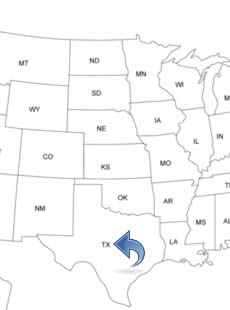TEXAS PEOPLE SEARCH!
- ✔ Contact Info
- ✔ Phone Numbers
- ✔ Criminal Records
- ✔ Income Info
- ✔ Neighbors
- ✔ People's Age
- ✔ Property Ownership
- ✔ And Much More
San Antonio, Texas
San Antonio is located in the south-central part and is the second largest city in the U.S. State of Texas. River City. Alamo City. More than twenty million tourists visit San Antonio and its attractions every year. It is the most visited city in Texas. The city has fine art museums, historical missions, and many amusement parks. San Antonio is home to five Fortune 500 companies the city is also home to one of the largest military concentrations in the USA.
To See And To Do In San Antonio
- Sea World
- Ghost Hunts of San Antonio Texas Tour
- King William Historic Area
- San Antonio Museum of Art
- San Antonio Botanical Garden
- Buckhorn Saloon and Museum
- Marion Koogler McNay Art Museum
- Casa Navarro State Historical Park
- The Alamo
- Natural Bridge Caverns
- Japanese Tea Garden
- Blue Star Contemporary Art Center
- San Antonio Children's Museum
- River Walk
- Aztec on the River
- Museo Alameda
- McNay Art Museum
- Witte Museum
- Instituto de México
- San Antonio Missions National Park
- San Antonio Zoological Gardens and Aquarium
History Of San Antonio - Timeline
In 1691, Spanish explorers came to the area. In 1709, more Spaniards came to the area and in 1716 the Spanish government established several Roman Catholic missions. In 1718, Mission San Antonio de Valero was founded, and a military fort was constructed to protect the settlement. The mission's nickname became the Alamo. Six missions in all were founded around San Antonio. They spread European culture and converted the native people to Christianity.
In 1726, the official settlement population was 200. In 1731, Spain sent another 56 settlers to the area and they established the first civil government in Texas. San Antonio grew and became the largest Spanish settlement in Texas.
In 1744, the settlers started to build a church. In 1793, Mission San Antonio was removed from Church control.
In 1801, the Irish-American trader Philip Nolan did hunt wild horses in the area. Spanish troops captured Nolan and his followers. Nolan was killed but surviving followers marched to San Antonio.
In 1809, the city was incorporated. In 1819, San Antonio was damaged by a flood. In 1821, San Antonio became part of Mexico.
In 1836, Mexican troops launched an assault on the Alamo Mission, San Antonio. The San Antonio force retreats into the walled compound. After a two-week siege, the Mexican army again attacked. A volunteer force including the former Tennessee congressman, Davy Crockett, helped the defenders but all of the defenders were killed. The eyewitnesses reported 182 Texians died and that about 600 Mexican soldiers were killed or wounded.
In 1842, in spring, a Mexican force briefly occupied San Antonio. They soon headed back to the Rio Grande. Later the same year, in the autumn, San Antonio again was captured by Mexican troops. The battles in Mexico's fight for independence from Spain did not end until 1845 when the United States annexed Texas and included it as a state in the Union. In 1846, James Dunn, the first City Marshal, was hired.
In 1850, there were more than 3,400 people living in the city. In 1860, gas lights lit the streets in downtown San Antonio. In 1865, the major newspaper, the San Antonio Express-News, was published.
In 1870, electric lights replaced the gas lamps. In 1877, the railroad was completed. In 1878, San Antonio streetcar service began. The cars were pulled by horses and mules. In 1886, the San Antonio Academy of Texas was established.
In 1890, The streetcar service was electrified. In 1891, the first Battle of Flowers parade was held. The same year the San Antonio Fire Department was established.
In 1900, more than 53,300 were living in the city. Twenty years later, in 1920, there were more than 161,300 people living in San Antonio. In 1921, a flood devastates downtown San Antonio. In 1933, the streetcars were replaced by buses. In 1941, San Antonio International Airport was founded. In 1966, the Alamo was listed on the National Register of Historic Places.

